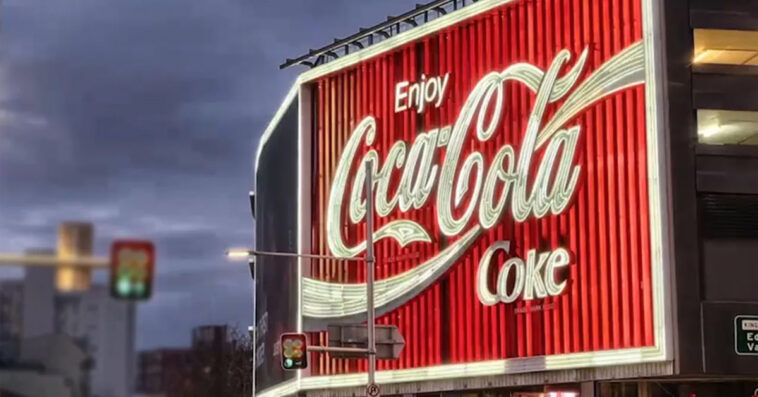For the first time in over 40 years, Coca‑Cola is bringing back a cane sugar–sweetened version of its iconic soda to the U.S. this fall. The move marks a nostalgic shift for the beverage giant, which famously replaced real sugar with high‑fructose corn syrup (HFCS) in the early 1980s due to rising costs. Now, amid growing consumer demand for simpler, more natural ingredients, Coke’s return to cane sugar taps into both retro appeal and modern wellness trends. But will this returning version replace the classic Coke Americans have grown up with?
Coca‑Cola Joins Industry Trend Toward Simpler Ingredients
Rumors of Coca‑Cola’s formula shake-up began swirling on July 16 when President Donald Trump claimed on Truth Social: “I have been speaking to Coca-Cola about using REAL Cane Sugar in Coke in the United States, and they have agreed to do so.” While many dismissed the post as speculative, it quickly gained traction online—prompting a wave of curiosity about whether Coke was truly making a move.
The company gave a quiet but definitive answer in its July 22 second-quarter earnings report, stating: “As part of its ongoing innovation agenda, this fall in the United States, the company plans to launch an offering made with U.S. cane sugar to expand its Trademark Coca-Cola product range.”
Though Coca‑Cola has previously offered limited-edition, real-sugar versions—like the popular Mexican Coke and the seasonal yellow-cap bottles during Passover—this marks the first time a cane-sugar variant will be widely available year-round in the U.S.
The move also arrives at a time when major food and beverage companies are under growing pressure to clean up ingredient lists and cater to evolving consumer expectations. Industry giants like Nestlé, Kraft Heinz, and Hershey’s have already pledged to remove artificial additives from many of their products, signaling a broader shift in what American shoppers are looking for. Now, with Coca‑Cola entering the conversation in a high-profile way, the spotlight turns to how this new offering will be received—and whether it could influence future decisions across the soda aisle.
Cane Sugar Coke: A New Choice, Not a Replacement
Despite the buzz, Coca‑Cola fans can rest easy—for now. The new cane sugar version of Coke won’t be replacing the classic formula, a Coca‑Cola spokesperson confirmed to People. “This addition is designed to complement the company’s strong core portfolio and offer more choices across occasions and preferences,” they said.
While the brand has confirmed its flagship cola will get the cane sugar treatment, it hasn’t yet revealed whether other popular beverages in its lineup—such as Sprite, Fanta, or Simply—will follow suit.
As for when the new soda will hit shelves, Coca‑Cola has only said it’s coming “this fall.” But those eager to taste Coke with real sugar don’t necessarily have to wait.
In the U.S., cane sugar Coca‑Cola makes seasonal appearances during Passover, identified by its distinctive yellow cap. For a more consistent option, consumers can turn to Coca‑Cola de México (also known as Mexican Coke), which is made with real sugar and widely available year-round. Other international markets, including Australia, also produce cane sugar–sweetened Coke, though these versions are harder to find on American shelves.
Cane Sugar vs. High-Fructose Corn Syrup: Which Is Healthier?
When it comes to sweeteners, few debates are as persistent as the one between cane sugar and high-fructose corn syrup (HFCS). Both are widely used in processed foods and beverages, and nutritionally, they’re more similar than many people realize. Each delivers roughly the same number of calories per gram and consists primarily of two simple sugars: glucose and fructose.
Cane sugar, also known as sucrose, is derived from sugar cane or sugar beets. It contains a 50/50 ratio of glucose and fructose and is often perceived as a more “natural” or “clean-label” ingredient. Its reputation has improved in recent years as consumers look for more minimally processed alternatives to artificial or chemically altered sweeteners.
HFCS, on the other hand, is made from corn starch that’s been enzymatically treated to convert some of its glucose into fructose. In sodas and many processed foods, the most common form—HFCS-55—contains about 55% fructose and 45% glucose. While the difference in sugar composition is relatively small, HFCS has faced criticism for its association with the rise in obesity and metabolic disorders in the U.S., particularly when consumed in excess through sugary beverages.
Despite public perception, scientific research hasn’t found HFCS to be significantly worse than cane sugar when consumed in moderate amounts. The real issue isn’t the sweetener itself, but rather the overall amount of added sugar people consume. Whether it comes from cane sugar or HFCS, too much of either can increase the risk of weight gain, insulin resistance, and heart disease.
In the end, the debate between cane sugar and HFCS matters less than the total quantity of sugar in your diet. While cane sugar may have a cleaner label and nostalgic appeal, especially with Coca-Cola’s upcoming cane sugar variant, health experts agree: cutting back on all forms of added sugar is the best way to protect your long-term health.
Source: People

